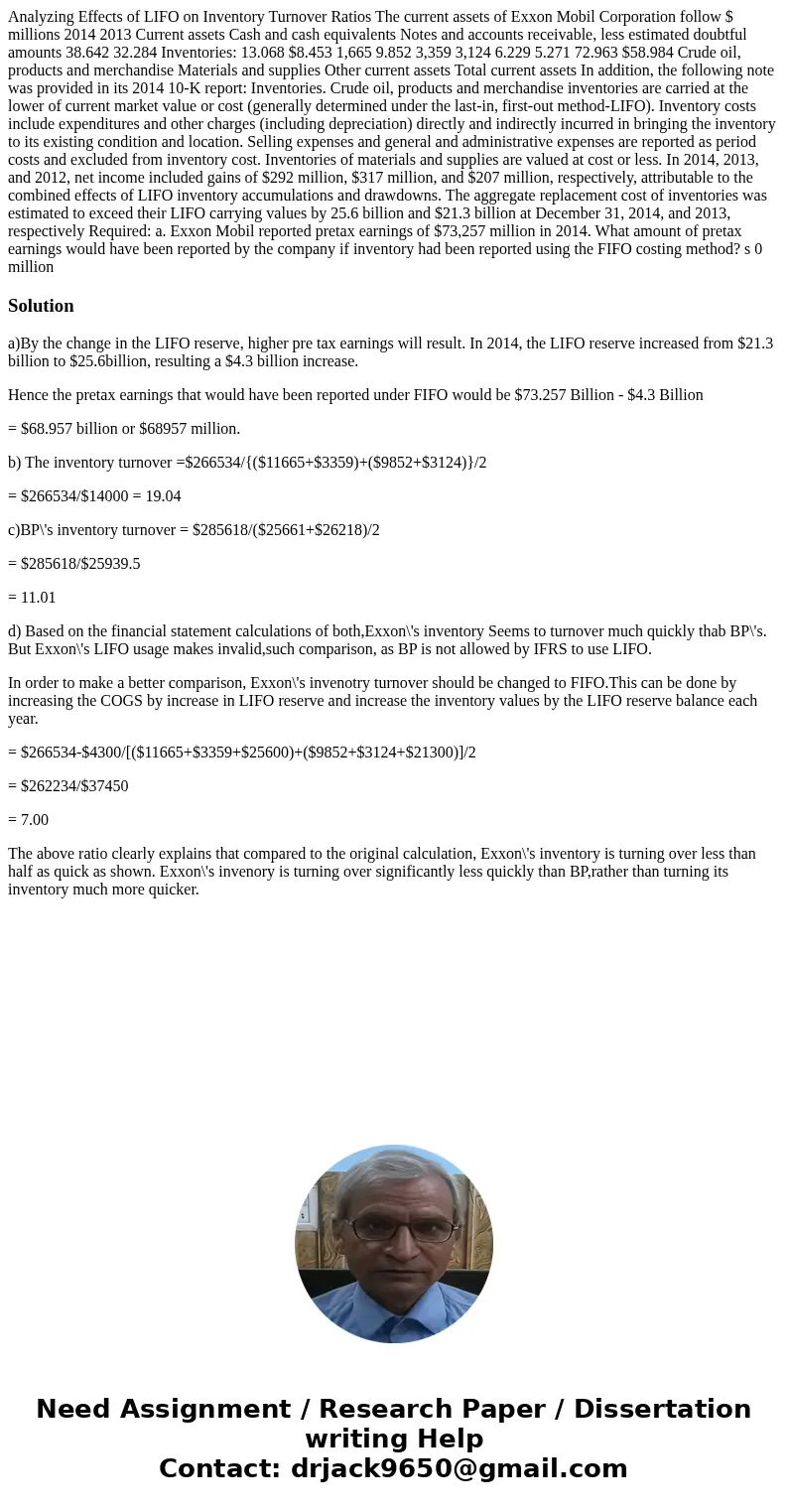Analyzing Effects of LIFO on Inventory Turnover Ratios The current assets of Exxon Mobil Corporation follow $ millions 2014 2013 Current assets Cash and cash equivalents Notes and accounts receivable, less estimated doubtful amounts 38.642 32.284 Inventories: 13.068 $8.453 1,665 9.852 3,359 3,124 6.229 5.271 72.963 $58.984 Crude oil, products and merchandise Materials and supplies Other current assets Total current assets In addition, the following note was provided in its 2014 10-K report: Inventories. Crude oil, products and merchandise inventories are carried at the lower of current market value or cost (generally determined under the last-in, first-out method-LIFO). Inventory costs include expenditures and other charges (including depreciation) directly and indirectly incurred in bringing the inventory to its existing condition and location. Selling expenses and general and administrative expenses are reported as period costs and excluded from inventory cost. Inventories of materials and supplies are valued at cost or less. In 2014, 2013, and 2012, net income included gains of $292 million, $317 million, and $207 million, respectively, attributable to the combined effects of LIFO inventory accumulations and drawdowns. The aggregate replacement cost of inventories was estimated to exceed their LIFO carrying values by 25.6 billion and $21.3 billion at December 31, 2014, and 2013, respectively Required: a. Exxon Mobil reported pretax earnings of $73,257 million in 2014. What amount of pretax earnings would have been reported by the company if inventory had been reported using the FIFO costing method? s 0 million
a)By the change in the LIFO reserve, higher pre tax earnings will result. In 2014, the LIFO reserve increased from $21.3 billion to $25.6billion, resulting a $4.3 billion increase.
Hence the pretax earnings that would have been reported under FIFO would be $73.257 Billion - $4.3 Billion
= $68.957 billion or $68957 million.
b) The inventory turnover =$266534/{($11665+$3359)+($9852+$3124)}/2
= $266534/$14000 = 19.04
c)BP\'s inventory turnover = $285618/($25661+$26218)/2
= $285618/$25939.5
= 11.01
d) Based on the financial statement calculations of both,Exxon\'s inventory Seems to turnover much quickly thab BP\'s. But Exxon\'s LIFO usage makes invalid,such comparison, as BP is not allowed by IFRS to use LIFO.
In order to make a better comparison, Exxon\'s invenotry turnover should be changed to FIFO.This can be done by increasing the COGS by increase in LIFO reserve and increase the inventory values by the LIFO reserve balance each year.
= $266534-$4300/[($11665+$3359+$25600)+($9852+$3124+$21300)]/2
= $262234/$37450
= 7.00
The above ratio clearly explains that compared to the original calculation, Exxon\'s inventory is turning over less than half as quick as shown. Exxon\'s invenory is turning over significantly less quickly than BP,rather than turning its inventory much more quicker.

 Homework Sourse
Homework Sourse